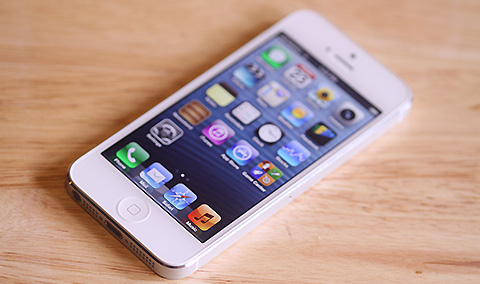Using multiple internet services has its benefits. I have 2 DSL providers at home, a postpaid mobile WiFi plan, and 2 smartphone subscriptions with mobile internet plans. As such, I am able to dedicate one line to a specific task or purpose.
At home, the two DSL connections are divided between the media server and the general WiFi internet use. The mobile hotspot subscription is generally used to power internet inside the car and the two smartphone subscriptions with LTE service are my primary source everywhere else I go.
It is almost impossible to imagine that with this setup, I would hit the wall and still hit that data cap. That’s what happens if you rely too much on your LTE connection. And indeed, two of my smartphone subscriptions finally met their match last month.

My iPhone 5 subscription comes with unlimited surfing plans from Globe. Within the month of April, I hit the data cap with an estimated bandwidth consumption of 6GB. Not bad, even for heavy phone usage. Had this for 4 years and this is the first time I hit the cap. The culprit — using LTE and sharing the hotspot with 4 other devices.
My LG Optimus G LTE was also on postpaid subscription (Plan 2500) but does not have any mobile surfing plans and is fully consumable. What I do is subscribe to PowerSurf 99 and just let is consume as much bandwidth as it can. Incidentally, I also use this phone as my primary hotspot service even at home (forgoing the much slower DSL connection). The result, almost 94GB of bandwidth consumed in less than 30 days.
Fortunately, Globe’s No Bill Shock policy saved me from a Php118,000 data charge (computed on a per KB basis) beyond the PowerSurf 99 consumption and billed me just Php999 (plus VAT).
What is noteworthy to share in this experience is how the telco engineered the appropriation of bandwidth once the soft limit is crossed. In this instance, we saw two different techniques.
1) For the iPhone 5, once you reach the bandwidth limit of your plan, the telco will cut off service to the Personal Hotspot. This means you can no longer share your phone’s internet to other devices. They will still give you fast LTE access on the phone.
Whenever you hit the Personal Hotspot toggle on the iPhone 5, it will freeze and prompt you with a message that you need to call them to re-activate the hotspot feature. Fair enough.

This restriction method emphasizes that the internet subscription plan for your phone should be just for the phone only, not 12 other laptops, smartphones or tablets that you or your family owns.
2) For the LG Optimus G LTE, it’s a different story. Since I was using the per-KB charging, there’s technically no data cap. The idea is that you are charged by the amount of bandwidth that you download so it’s up to you how much you want to consume and be charged accordingly.
That is probably the reason why I was able to consume over 90GB in less than a month and almost got away with it. So why did I think I hit the cap? I guess it’s probably because the postpaid account has a certain credit limit and once that credit limit is breached, they need to throttle you down with the charging (just a theory).

My download speeds can sometimes reach up to 3.1MB per second (~24 Megabits per second).
Unlike the iPhone 5 where the Personal Hotspot is disabled, the Android device can still use the WiFi hotspot feature.
However, what the telco will do is kick you out of their LTE frequency and dumps you back into the 3G/EDGE network. The network checks your phone’s settings every 30 seconds and switches you automatically from GSM/WCDMA/LTE to WCDA only.

To overcome this, I would create a shortcut to the mobile network settings and manually switch back to LTE (yeah, it’s a switching back game every 30 seconds or so!). The experience was pretty interesting as it gives us an idea how the telco manages the network among users (especially the heavy users like me).
I have no experience with Smart (my only subscription is a Smart Bro Plan 999 on a pocket WiFi) with how they manage their networks so I assume that those on Unli Data Plans (attached to a smartphone subscriptions) have that 1.5GB monthly data cap (based on their Fair Usage Policy) and utilizes almost the same techniques as well (we need to do some more actual research on this one though and share with you our results).
Nevertheless, this is something a number of our readers have experienced too but did not realized. So the next time you suddenly noticed that you’re getting EDGE signal from your smartphone instead of the usual LTE or HSPA+, then it’s possible you’ve hit your monthly quota and they’re kicking you out of the data “skyway” back to the slower “service road”.
The post What happens after you reach the Data Cap? appeared first on YugaTech | Philippines, Tech News & Reviews.